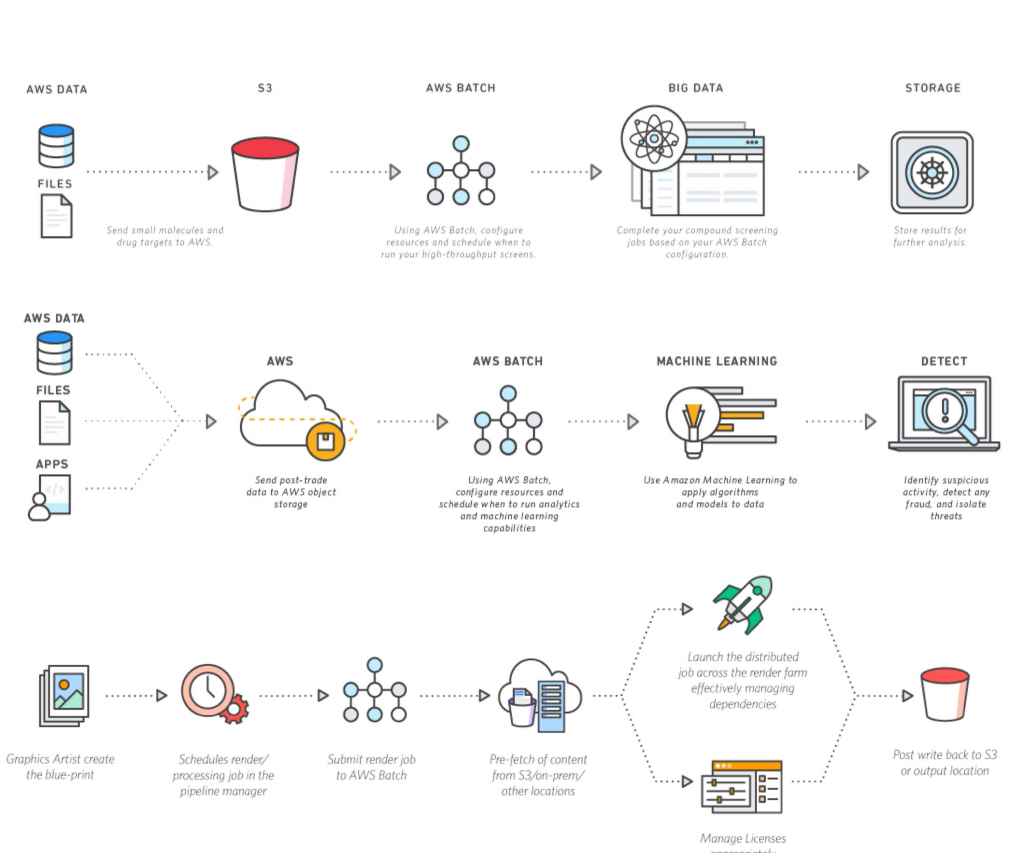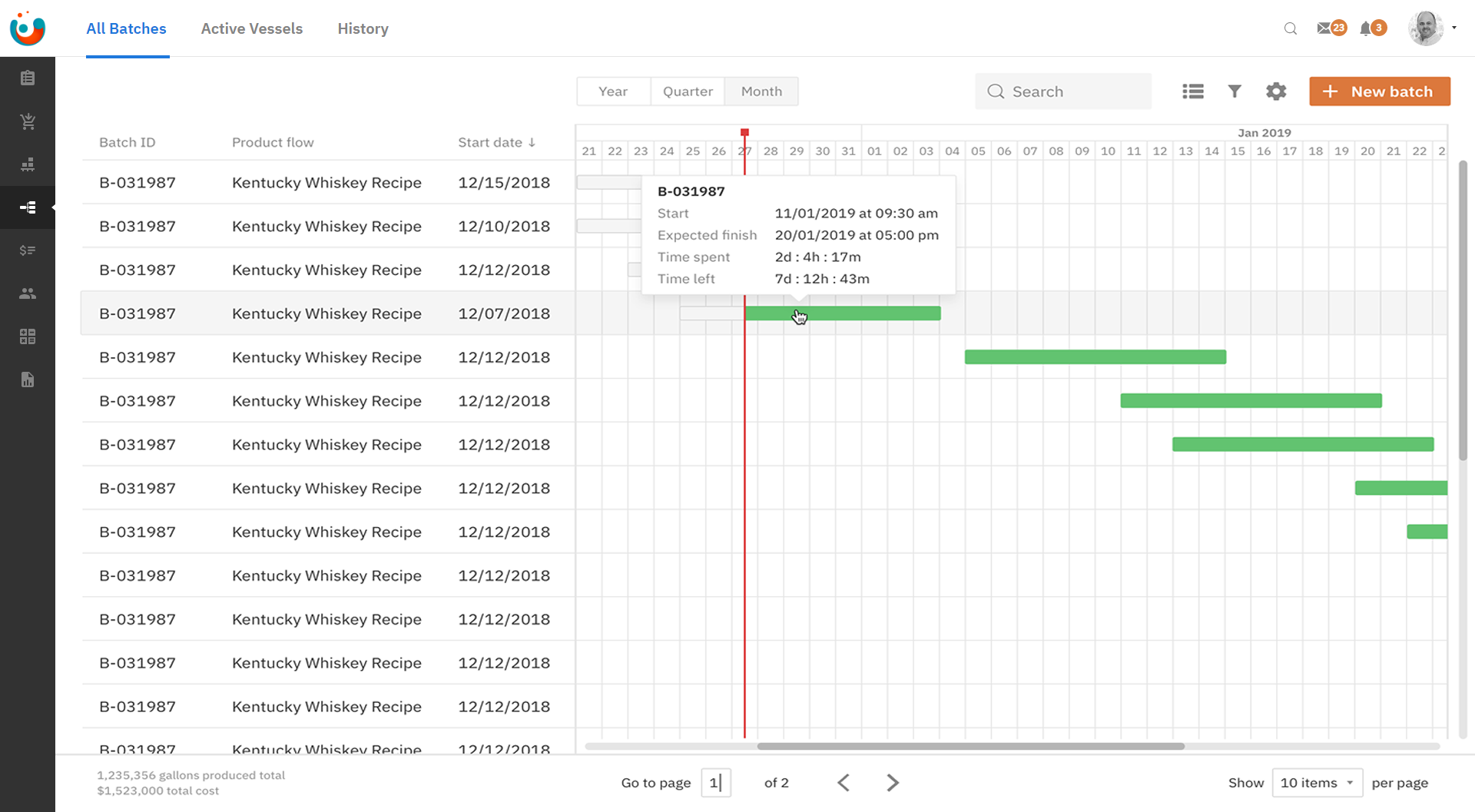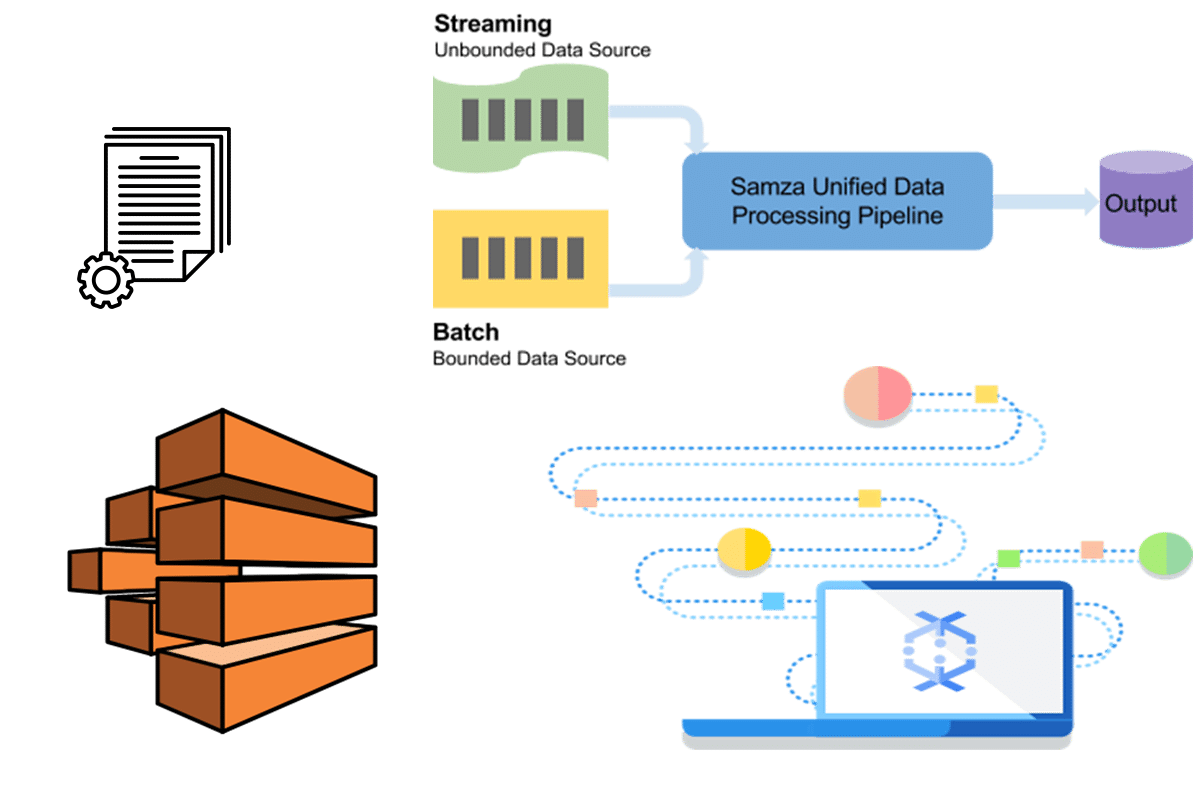Thinking about how to get all your connected gadgets to work together, especially when you have lots of them sending bits of information? It can feel a bit like herding cats, trying to make sure everything gets processed without a hitch, particularly when those gadgets are out there in far-off places. We are going to chat about how setting up a remote IoT batch job can make things much smoother, using services from Amazon's cloud platform to handle everything in a very smart way.
When you have countless devices, from little sensors to bigger machines, all sending data back home, you really need a good system to sort through it all. It's not just about getting the data; it's about doing something useful with it, maybe cleaning it up, or getting it ready for a bigger look later on. This is where a batch job, especially one for remote IoT devices, steps in as a helpful friend, you know?
So, this approach lets you collect information from many different spots, put it all together, and then process it in chunks, rather than one tiny piece at a time. It saves a lot of trouble and helps keep things running without too much fuss. We'll explore how this looks with a real-world remote IoT example using Amazon's widely used cloud services, at the end of the day.
Table of Contents
- What is a Remote IoT Batch Job, Anyway?
- Why Bother with Remote IoT Batch Processing?
- How Does AWS Help with Remote IoT Batch Tasks?
- Getting Data from Your Remote IoT Devices
- Processing Your Remote IoT Data with AWS
- A Practical Remote IoT Batch Job Example
- Setting Up the Remote IoT Data Collection
- Making Your Remote IoT Batch Job Work Better?
What is a Remote IoT Batch Job, Anyway?
Picture this: you have a whole bunch of smart things, like sensors checking the weather in far-off fields, or little machines keeping an eye on water levels in reservoirs, and they're all sending little messages back to a central spot. A "remote IoT batch job" is basically a way to gather all those messages, usually over a period of time, and then deal with them all at once, in a group. It's like collecting all the mail for a week and then opening it all on Monday morning, instead of opening each letter the moment it arrives. This kind of work is really good for situations where you don't need to react to every single bit of information right away, but you do need to make sense of a lot of it together. So, it's a way of making sure you get all the important pieces of information from your scattered devices, and then you work on them in a sensible, organized way. It makes things a good deal more orderly, you see.
For instance, if you have a thousand temperature sensors spread out across a large area, they might send a temperature reading every hour. Instead of processing each reading as it comes in, which could be a bit much for your system to handle constantly, you might decide to gather all the readings for an entire day. Then, at midnight, you run a special program that looks at all those 24,000 readings at once. This program could figure out the average temperature for each spot, find the highest and lowest temperatures, or even spot any odd readings that don't look right. This method helps save computing power and makes it easier to get a bigger picture from all the tiny bits of information. It's pretty much a way to make sure your system doesn't get swamped with too many small tasks, which is that kind of thing you want to avoid.
Why Bother with Remote IoT Batch Processing?
You might wonder why someone would choose to handle information in big groups instead of as it arrives. Well, there are a few good reasons, honestly. First off, it can save you a fair bit of money. When you're dealing with cloud services, you often pay for the amount of time your computers are running or how many times they have to wake up to do something. If you're processing every single tiny bit of information as it comes in, your computers might be working almost all the time, even if there's not much to do. But if you wait and do things in batches, you can start up your computing power, do all the work quickly, and then shut it down again, saving on those running costs. It's like turning off the lights when you leave a room, so to speak.
Another reason is that it often works better for certain types of tasks. Sometimes, to get a true picture, you need to look at a lot of information together. For example, if you're trying to figure out a trend or spot something unusual, having a big chunk of data helps you see the patterns more clearly than looking at one piece at a time. It's like trying to understand a story by reading one word versus reading a whole paragraph. Plus, it can make your overall system more steady. If a single device sends a bad reading, it's less likely to mess things up when it's part of a big group being checked all at once. The system can just skip over it or fix it as part of the bigger job, which is something you definitely want for your remote IoT batch job setup. Basically, it makes everything run smoother and more reliably, which is pretty important for a remote IoT system.
How Does AWS Help with Remote IoT Batch Tasks?
Amazon Web Services, or AWS as most folks call it, offers a whole collection of tools that are just right for setting up and running remote IoT batch jobs. They have services that can collect information from your devices, keep it safe, and then get it ready for processing. Think of it like a giant, very organized post office and sorting center all rolled into one. You send your letters (your device information) to them, they sort it, and then they have the people and machines ready to deal with it in big piles when the time is right. This means you don't have to build all that infrastructure yourself, which would be a very big job indeed. Instead, you just use what AWS already has, and pay for what you use. It makes getting started with your remote IoT batch job a lot simpler, you know?
One of the big helpers here is something called AWS IoT Core. This is the part that talks directly to your devices, no matter where they are. It's like the main switchboard for all your little gadgets, making sure their messages get through. Then, there are services for storing all that incoming information, like S3, which is a place to keep pretty much any kind of file, or DynamoDB, which is a kind of database that's really good for lots of fast-moving information. After the information is safely stored, you can use other AWS tools, like AWS Lambda, which lets you run little bits of code without having to manage a server, or AWS Batch, which is specifically for running those bigger, scheduled jobs. These tools all work together, kind of like different members of a team, to make sure your remote IoT batch job runs smoothly from start to finish, and that's actually pretty cool.
Getting Data from Your Remote IoT Devices
Getting information from all your far-off devices is the very first step in setting up any remote IoT batch job. AWS has a service called AWS IoT Core that acts like a welcoming front door for all your device messages. Your little gadgets, wherever they are, can send their information to IoT Core using standard ways of talking, like MQTT or HTTPS. It's a bit like sending a text message; the device sends its data, and IoT Core is there to receive it. Once IoT Core gets the message, it can then pass that information along to other services. This is where the magic of putting things into batches really begins, because instead of immediately processing each message, you can tell IoT Core to send the messages to a holding area. So, for example, it can direct all the incoming data straight into a storage spot like an S3 bucket, which is like a giant digital folder in the cloud.
This S3 bucket then becomes the collection point for your remote IoT information. All day long, or however often your devices send data, these bits of information just pile up in this digital folder. You can set it up so that each device's information gets its own file, or maybe all the information from a certain hour gets put into one file. The way you organize it depends on how you plan to process it later. The important thing is that all this information is gathered in one spot, waiting for its turn to be looked at. This method makes sure that no matter how many devices you have or how much information they're sending, it all gets neatly put away until you're ready to deal with it in a big group. It's a rather straightforward way to manage incoming data, honestly.
Processing Your Remote IoT Data with AWS
Once all your remote IoT information is sitting nicely in a storage place, like an S3 bucket, the next step is to actually do something with it. This is where the "batch job" part truly comes alive. You can use a service like AWS Lambda to kick off a process, perhaps on a schedule. For example, every night at midnight, a Lambda function could start running. This function's job would be to go into that S3 bucket, pick up all the new information that's arrived since the last time it ran, and then begin working on it. It might clean up the data, making sure there are no odd characters or missing pieces. It could also change the format of the data so it's easier for other programs to read, or it might even combine information from different devices to create a more complete picture. This is a pretty simple way to get things done, you know.
For bigger jobs, where you need more computing muscle or longer running times, you might use AWS Batch. This service is really good for those tasks that need a lot of power but don't need to happen instantly. You tell AWS Batch what kind of computing resources you need, and it finds them for you, runs your processing code, and then shuts everything down when the job is done. So, if your remote IoT batch job involves running complex calculations on millions of data points, AWS Batch can handle it without you having to worry about setting up and managing servers. It's like having a team of workers on standby, ready to jump in and do a big task when you need them, and then they go home until the next big task comes along. This approach saves resources and makes sure your processing happens efficiently, which is quite important for any large-scale data handling.
A Practical Remote IoT Batch Job Example
Let's think about a real-world situation where a remote IoT batch job using AWS would be super helpful. Imagine you have a company that manages thousands of smart streetlights across several cities. Each streetlight has a little sensor that reports its status: if it's on or off, how bright it is, and if there are any issues, like a flickering bulb or a power problem. These streetlights send their status updates every few minutes. Now, you don't need to know the exact moment a light flickers, but you do need to know if a light has been off for a long time, or if many lights in one area are having trouble. This is a perfect spot for a batch job, really. You want to collect all those updates, then look at them together to spot problems and figure out where to send maintenance crews. This is a rather common kind of scenario for remote IoT operations, to be honest.
In this example, the streetlights are your remote IoT devices. They are constantly sending small bits of information. Instead of reacting to each tiny update, which would create a huge amount of alerts and might overwhelm your team, you gather all the updates for, say, an hour or even a whole day. Then, you run a batch job to analyze all that information. This job can identify streetlights that have been consistently off, or those that are reporting odd brightness levels. It could also group problems by location, so you know which neighborhood needs the most attention. This way, your maintenance team can plan their routes more effectively, fixing multiple issues in one trip instead of running around for every single flicker. It makes the whole operation much more sensible and saves a lot of effort, in a way.
Setting Up the Remote IoT Data Collection
For our streetlight example, setting up the remote IoT data



Detail Author:
- Name : Rodrick Romaguera PhD
- Username : providenci.davis
- Email : hermiston.vincent@hotmail.com
- Birthdate : 1976-03-02
- Address : 3717 Vella Estates Port Cristobal, DC 72982-9344
- Phone : 862.324.0165
- Company : Sawayn, O'Conner and Gaylord
- Job : Title Abstractor
- Bio : Optio magnam earum ea vero quaerat sed molestiae. Incidunt labore reprehenderit voluptatem eligendi unde et tempora. Aut molestiae soluta sit quo at corrupti.
Socials
facebook:
- url : https://facebook.com/alicia_rempel
- username : alicia_rempel
- bio : Autem consequatur voluptatum rem nulla ducimus aperiam harum.
- followers : 138
- following : 119
instagram:
- url : https://instagram.com/alicia.rempel
- username : alicia.rempel
- bio : Eveniet sit placeat error molestiae. Dolor eos sit repudiandae aut ex atque.
- followers : 5432
- following : 539
tiktok:
- url : https://tiktok.com/@rempel2024
- username : rempel2024
- bio : Magnam quia dolorem maxime cum cupiditate aut quas quisquam.
- followers : 4949
- following : 2630
twitter:
- url : https://twitter.com/rempela
- username : rempela
- bio : Ea consequatur expedita atque sapiente commodi dolorem perspiciatis. Quia voluptatum culpa eveniet eos. Consequatur aliquam et dignissimos animi ut modi.
- followers : 3111
- following : 1713

